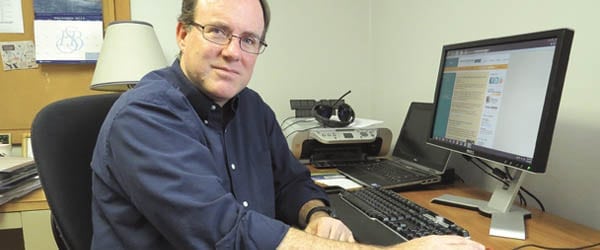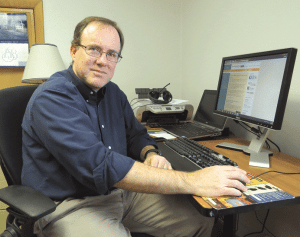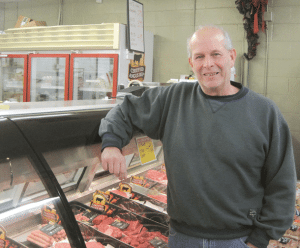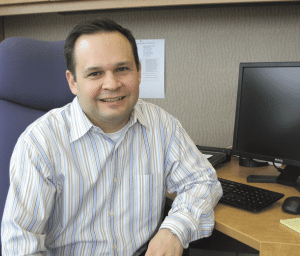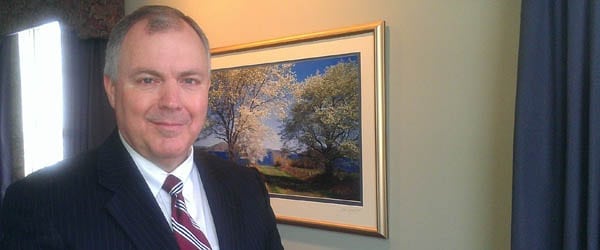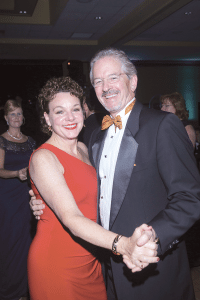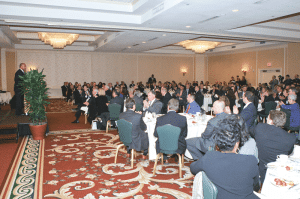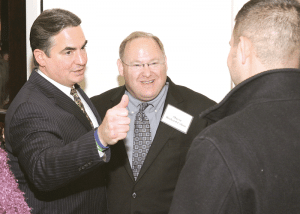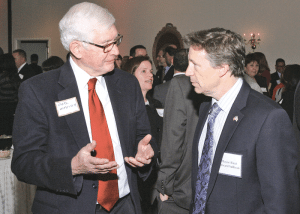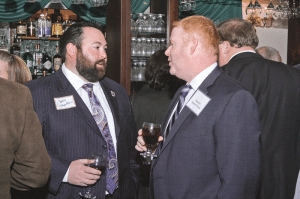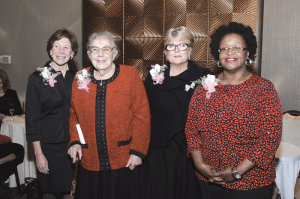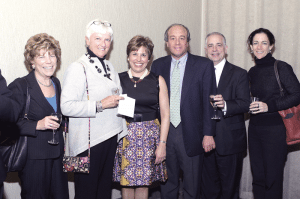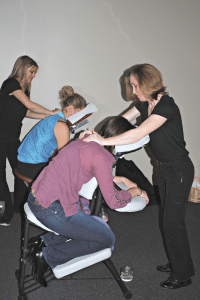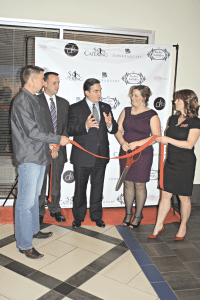The following bankruptcy petitions were recently filed in U.S. Bankruptcy Court. Readers should confirm all information with the court.
ACS, Inc.
Architectural Construction
Tavernia, Lee Francis
PO Box 254
East Otis, MA 01029
Chapter: 7
Filing Date: 11/13/13
Arruda, Edmund S.
Arruda, Laura B.
572 Old Stage Road
Ashfield, MA 01330
Chapter: 7
Filing Date: 10/23/13
Asante, Lana
6 Acton St.
Wilbraham, MA 01095
Chapter: 7
Filing Date: 11/06/13
Barnett, Mychael
14 Berkeley St.
Springfield, MA 01109
Chapter: 13
Filing Date: 10/22/13
Baum, Alan L.
30 Miller Road
Southwick, MA 01077
Chapter: 7
Filing Date: 10/31/13
Bedore, John P.
262 Amostown Road
West Springfield, MA 01089
Chapter: 13
Filing Date: 10/31/13
Bielunis, Alexander John
8 Sequoia Dr.
Holyoke, MA 01040
Chapter: 7
Filing Date: 11/12/13
Bixby, Jane C.
372 Page Blvd.
Springfield, MA 01104
Chapter: 7
Filing Date: 10/25/13
Boucher, Robin M.
245 Sand Springs Road
Williamstown, MA 01267
Chapter: 7
Filing Date: 11/01/13
Bresnahan, Alyssa M.
P.O. Box 464
Holyoke, MA 01041
Chapter: 7
Filing Date: 10/31/13
Brooks, Tara M.
999 Hampden St.
Holyoke, MA 01040
Chapter: 7
Filing Date: 11/14/13
Brown, Donna M.
16 Lawndale St.
Springfield, MA 01108
Chapter: 7
Filing Date: 11/11/13
Butler, George W.
Butler, Esther A.
PO Box 25
Oakham, MA 01068
Chapter: 7
Filing Date: 10/30/13
Campbell, Lori A.
44 May Hill Road
Monson, MA 01057
Chapter: 13
Filing Date: 10/22/13
Caney, Verna M.
269 Stony Hill Road
Apt. G3-108
Wilbraham, MA 01095
Chapter: 7
Filing Date: 10/28/13
Cassidy, Mary Catherine
44 Maple St. #1
Florence, MA 01062
Chapter: 7
Filing Date: 10/29/13
Collins, Todd W.
653 Russell Road
Westfield, MA 01085
Chapter: 7
Filing Date: 11/05/13
Core Fitness
St. Sauveur, John
27 Chapin Circle
Ludlow, MA 01056
Chapter: 7
Filing Date: 10/22/13
Crespo Negron, Carlos Alverto
Baez Alvarado, Maritza
134 Union St. Apt 35
Westfield, MA 01085
Chapter: 7
Filing Date: 10/21/13
Crow, Karen A.
a/k/a Moorhouse, Karen
394 Chapin St.
Apartment 12
Ludlow, MA 01056
Chapter: 7
Filing Date: 11/06/13
DAS Construction
Stein, Yanir
a/k/a Stein Schabes, Yanir
Ban Stein, Rachel Ina
Stein, Rachel
18 Fort Hill Road
Haydenville, MA 01039
Chapter: 7
Filing Date: 10/25/13
Daviau, David E.
111 Adelaide Ave.
Pittsfield, MA 01201
Chapter: 7
Filing Date: 10/18/13
DeJesus, Erica Ann-Marie
a/k/a Williamsen, Erica Ann-Marie
74 Newhall St.
Springfield, MA 01109
Chapter: 7
Filing Date: 10/29/13
Dembinske, Paula
53 Beacon St.
Greenfield, MA 01301
Chapter: 7
Filing Date: 10/25/13
Depalma, Brooke N.
56 Elm St.
Hatfield, MA 01038
Chapter: 7
Filing Date: 10/31/13
Drinkwine, Kathy A.
118 Kensington Ave.
Springfield, MA 01119
Chapter: 7
Filing Date: 11/11/13
Dufraine, Tammy J.
77 Skyridge Dr.
Springfield, MA 01102
Chapter: 7
Filing Date: 10/31/13
Faulkner, Donald W.
4 Marshall St.
Turners Falls, MA 01376
Chapter: 13
Filing Date: 11/09/13
Fehily, Thomas G.
Fehily, Kathryn M.
23 Tom St.
Feeding Hills, MA 01030
Chapter: 7
Filing Date: 10/21/13
Fila, Christopher E.
1331 East Columbus Ave.
Springfield, MA 01105
Chapter: 7
Filing Date: 11/08/13
Flahive, Ted M.
105 Amherst Road
South Hadley, MA 01075
Chapter: 7
Filing Date: 10/24/13
Flis, John M.
Flis, Helen E.
670 Pendleton Ave.
Chicopee, MA 01020
Chapter: 7
Filing Date: 10/31/13
Fortier, Jean R.
76 Mitchell Dr.
Chicopee, MA 01022
Chapter: 7
Filing Date: 11/13/13
Francisco, Pascual M.
P.O. Box 1089
Great Barrington, MA 01230
Chapter: 13
Filing Date: 11/01/13
Gentile, Dominick Joseph
Gentile, Lori Jean
359 South Branch Parkway
Springfield, MA 01118
Chapter: 7
Filing Date: 10/28/13
Germain, Jeffery L.
29 Agnes St.
Springfield, MA 01118
Chapter: 7
Filing Date: 10/22/13
Gibbons, Matthew S.
159 Pleasant St.
Uxbridge, MA 01569
Chapter: 7
Filing Date: 10/17/13
Gilliam, Thomas F.
Gilliam, Jessica R.
a/k/a Shaw, Jessica
a/k/a Tower, Jessica
P.O. Box 87
Lee, MA 01260
Chapter: 7
Filing Date: 11/08/13
Girly’s Grill Inc.
Lind, Loribeth
11 Valley View Heights
Monson, MA 01057
Chapter: 7
Filing Date: 10/21/13
Glace, Andrew J.
97 Van Meter Dr.
Amherst, MA 01002
Chapter: 13
Filing Date: 10/20/13
Gomes, Victor G.
Gomes, Jennifer J.
42 Kittredge Dr.
Westfield, MA 01085
Chapter: 13
Filing Date: 10/31/13
Gornall, Justin M.
Gornall, Theresa A.
5 Ingersoll Dr.
Westfield, MA 01085
Chapter: 7
Filing Date: 10/17/13
Green, Gordon C.
7 Nelson St.
North Adams, MA 01247
Chapter: 7
Filing Date: 11/14/13
Griffin, Brian Patrick
7 Evangeline Dr.
Wilbraham, MA 01095
Chapter: 7
Filing Date: 11/12/13
Hampshire Computer Service
Brosseau, Daryl W.
6 Parc Place Apt. 7
Southampton, MA 01073
Chapter: 7
Filing Date: 10/24/13
Hanson, Deanna H.
8 Acorn St.
East Longmeadow, MA 01028
Chapter: 7
Filing Date: 10/25/13
Harrington, Brian K.
10 Lakewood Dr.
Pittsfield, MA 01201
Chapter: 7
Filing Date: 11/15/13
Heston, Cheryl A.
35 Hadely Road, Apt. 222
Sunderland, MA 01375
Chapter: 7
Filing Date: 10/25/13
Heywood, David
PO Box 675
Hadley, MA 01035
Chapter: 7
Filing Date: 10/29/13
Hill, Stephen T.
4 Warren Road
Wilbraham, MA 01095
Chapter: 7
Filing Date: 11/08/13
Jarvis, Richard T.
62 Thornton St.
Springfield, MA 01104
Chapter: 7
Filing Date: 11/01/13
Jones, Jacque L.
P.O. Box 63
Great Barrington, MA 01230
Chapter: 7
Filing Date: 10/17/13
Jose, Ramon E.
25 Talcott Ave.
Springfield, MA 01107
Chapter: 7
Filing Date: 10/24/13
Jozefowicz, Lynn A.
120 Acrebrook Dr.
Chicopee, MA 01020
Chapter: 7
Filing Date: 10/24/13
Jurczyk, Thomas J.
97 Simonich Circle
Chicopee, MA 01013
Chapter: 7
Filing Date: 11/04/13
Kelleher, Timothy G.
Kelleher, Louise D.
33 Pleasantview Ave.
Longmeadow, MA 01106
Chapter: 7
Filing Date: 10/17/13
Kenyon, Mary-Lou J.
a/k/a Dronzek, Marylou J.
a/k/a Kenyon, Marylou
a/k/a Dronzek, Marylou
2038 Oak St.
Three Rivers, MA 01080
Chapter: 7
Filing Date: 10/28/13
Kingsbury, James R.
7 Sefton Dr.
Southwick, MA 01077-9746
Chapter: 13
Filing Date: 10/30/13
Kokoski, Christine Lucia
358 River Dr.
Hadley, MA 01035
Chapter: 7
Filing Date: 10/29/13
Kumiega, Amber R.
51A Oak St.
Ludlow, MA 01056
Chapter: 7
Filing Date: 10/25/13
LaFountain, Donna J.
439 Crane Ave., Apt. #4
Pittsfield, MA 01201
Chapter: 7
Filing Date: 11/06/13
Lane, Allison T.
47 Emmet St.
Chicopee, MA 01020
Chapter: 7
Filing Date: 10/24/13
Lasorsa, Anthony J.
Lasorsa, Laura M.
10 Gary Place
Feeding Hills, MA 01030
Chapter: 7
Filing Date: 10/29/13
Lavelle, Sandra G.
28 Russell St.
Greenfield, MA 01301
Chapter: 7
Filing Date: 11/13/13
Lenkowski, Farilyn E.
25 Strong St.
Easthampton, MA 01027
Chapter: 7
Filing Date: 10/19/13
Leonard, Joseph Robert
8C Elm St.
South Deerfield, MA 01373
Chapter: 7
Filing Date: 10/21/13
Lockwood, Lydia E.
148 Riviera Dr.
Agawam, MA 01001
Chapter: 7
Filing Date: 10/29/13
Manzi, Philip
100 Beech St.
Holyoke, MA 01040
Chapter: 7
Filing Date: 11/15/13
Manzi, Diane M.
11 Buckingham Drive
Southwick, MA 01077
Chapter: 7
Filing Date: 11/15/13
Marie, Leticia
99 Lawrence St.
Palmer, MA 01069
Chapter: 7
Filing Date: 11/14/13
Martinez, Margarita
116 Barre St.
Springfield, MA 01119
Chapter: 7
Filing Date: 10/29/13
Marusarz, Laurie J.
240 Lenox Ave.
Pittsfield, MA 01201
Chapter: 7
Filing Date: 11/15/13
Masterjohn, Nicholas
Masterjohn, Ligia
10 Burbank Ave.
Warren, MA 01083
Chapter: 7
Filing Date: 10/24/13
McLean, Bruce T.
McLean, Dawn L.
111 Stevenson St.
Springfield, MA 01119
Chapter: 7
Filing Date: 10/29/13
Mieltowski, John S.
PO Box 686
Palmer, MA 01069
Chapter: 7
Filing Date: 10/17/13
Miner, Bradford L.
Miner, Virginia P.
a/k/a Perrier, Virginia L.
PO Box 1176
Warren, MA 01083
Chapter: 7
Filing Date: 11/01/13
Molina, Marisol
a/k/a Molina, Marie D.
18 Littleton St.
Springfield, MA 01104
Chapter: 7
Filing Date: 11/13/13
Morrow, James M.
34 Cross Road
Hampden, MA 01036
Chapter: 7
Filing Date: 10/21/13
Murray, Velikia V.
33 Massachusetts Ave.
Springfield, MA 01109
Chapter: 13
Filing Date: 10/30/13
Nolin, Jennifer
P.O. Box 39
Warren, MA 01083
Chapter: 7
Filing Date: 10/23/13
O’Neil, Todd M.
34 Nantasket St.
Springfield, MA 01129
Chapter: 7
Filing Date: 11/07/13
Opalenik, Stephen
5 Bach Lane
South Hadley, MA 01075
Chapter: 13
Filing Date: 11/03/13
Orr, Sterling W.
146 Sawmill Road
Springfield, MA 01118
Chapter: 13
Filing Date: 11/01/13
Parker, Roger
29 Cambridge St.
Springfield, MA 01109
Chapter: 7
Filing Date: 10/31/13
Pelletier, Lori A.
34 Cross Road
Hampden, MA 01036
Chapter: 7
Filing Date: 10/21/13
Pennell, Daisy C.
2 Carver St.
Granby, MA 01033
Chapter: 7
Filing Date: 10/25/13
Perez, Evelyn E.
5 Belli Dr.
Wilbraham, MA 01095
Chapter: 7
Filing Date: 11/14/13
Rafferty, Maureen
139 New Ludlow Road
Granby, MA 01033
Chapter: 7
Filing Date: 10/26/13
Roberts, Darryll T.
152 Casey Dr.
Chicopee, MA 01020
Chapter: 7
Filing Date: 10/31/13
Rodriguez, Cesar Guillermo
124 Kirkland Ave.
Ludlow, MA 01056
Chapter: 7
Filing Date: 11/06/13
Rose, Kathleen P.
16B Hampshire Heights
Northampton, MA 01060
Chapter: 7
Filing Date: 11/13/13
Rouillard, Roger J.
Rouillard, Shannon A.
a/k/a Zachary, Shannon
20 Ward St.
Chicopee, MA 01020
Chapter: 7
Filing Date: 10/31/13
Rovatti-Leonard, Angela Eileen
8C Elm St.
South Deerfield, MA 01373
Chapter: 7
Filing Date: 10/21/13
Ruddeforth, Thomas H.
Ruddeforth, Debra J.
468 Amostown Road
West Springfield, MA 01089
Chapter: 7
Filing Date: 11/12/13
Russell, Sharon L.
298 School St.
Athol, MA 01331
Chapter: 7
Filing Date: 11/10/13
Russo, Gasparino M.
Russo, Christine M.
214 Lawton St
Ludlow, MA 01056
Chapter: 7
Filing Date: 10/22/13
Salem, Joseph G.
65 Westfield Road
Holyoke, MA 01040
Chapter: 7
Filing Date: 11/04/13
Salgado-Agosto, William
372 Linden St.
Holyoke, MA 01040
Chapter: 7
Filing Date: 10/21/13
Santaniello, Catherine V.
7 Plumtree Circle
Springfield, MA 01118
Chapter: 7
Filing Date: 10/24/13
Santiago, Joanne
70 Broadway St., Apt 1
Chicopee, MA 01020
Chapter: 7
Filing Date: 11/06/13
Sayles, Kimberly A.
a/k/a Childs, Kimberly A.
139 Elm St.
Hatfield, MA 01038
Chapter: 7
Filing Date: 10/29/13
Serrato, Joseph V.
Serrato, Kathleen S.
10 Town Farm Road
Monson, MA 01057
Chapter: 7
Filing Date: 11/05/13
Sivard, Michelle F.
264 Huntington Road
Chester, MA 01011
Chapter: 7
Filing Date: 10/28/13
Smith, Dakota L. Cotton
PO Box 60311
Longmeadow, MA 01116-0311
Chapter: 13
Filing Date: 10/18/13
Smith, Vincent Matthew
53 Sanford St.
Chicopee, MA 01013
Chapter: 7
Filing Date: 10/22/13
Snow, Brian J.
102 South Main Road
Otis, MA 01253
Chapter: 7
Filing Date: 11/08/13
St. Sauveur, Susan
319 West Ave
Ludlow, MA 01056
Chapter: 7
Filing Date: 10/22/13
Stanton, Leslea L.
906 George Carter Road
Becket, MA 01223
Chapter: 7
Filing Date: 11/01/13
Stone, Cindy C.
36 South St.
South Hadley, MA 01075
Chapter: 7
Filing Date: 11/14/13
Storer, Michael L.
Lafountain, Nancy R.
12 George St.
Greenfield, MA 01301
Chapter: 7
Filing Date: 11/06/13
Tatro, Timothy F.
20 Biltmore Ave.
North Adams, MA 01247
Chapter: 7
Filing Date: 11/07/13
Thayer, Virginia E.
786 Pleasant St.
Athol, MA 01331
Chapter: 7
Filing Date: 11/04/13
Thibault, Yvette
P.O. Box 1242
West Springfield, MA 01089
Chapter: 7
Filing Date: 10/30/13
Thomas, Jermey L.
64 West St.
Greenfield, MA 01301
Chapter: 7
Filing Date: 10/28/13
Thompson, Ronald W.
Thompson, Kim A.
117 Athol Road
Royalston, MA 01368
Chapter: 7
Filing Date: 11/04/13
Torres, Wilson
70 Walnut St., Apt. 70
Holyoke, MA 01040
Chapter: 7
Filing Date: 10/31/13
Trinidad, Felix R.
43 Bristol St.
Springfield, MA 01109
Chapter: 7
Filing Date: 10/31/13
Vallecillo, Jessica P.
84 Fuller St., Unit 12
Ludlow, MA 01056-2310
Chapter: 7
Filing Date: 10/24/13
Vancini, Mona A.
146 Kathleen St.
Springfield, MA 01119
Chapter: 13
Filing Date: 11/05/13
Vazquez, Angel J.
764 Allen St.
Springfield, MA 01118
Chapter: 7
Filing Date: 10/21/13
Watson, Richard W.
Watson, Ann E.
40 East Myrtle St.
Orange, MA 01364
Chapter: 7
Filing Date: 10/31/13
Wood, Brian C.
Wood, Amy
74 River St.
Bernardston, MA 01337
Chapter: 7
Filing Date: 10/23/13
Zina, Jovita B.
P.O. Box 148
Ludlow, MA 01056
Chapter: 7
Filing Date: 11/07/13






